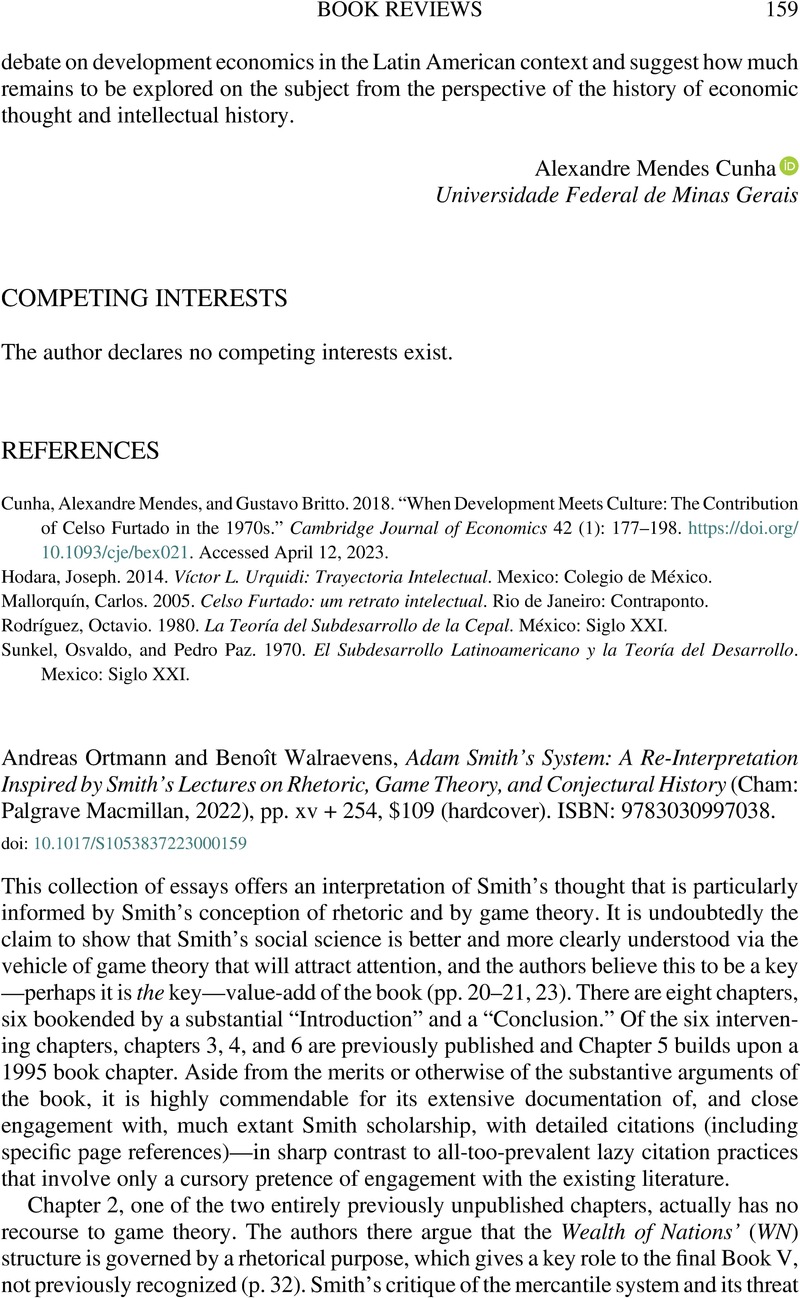No CrossRef data available.
Article contents
Andreas Ortmann and Benoît Walraevens, Adam Smith’s System: A Re-Interpretation Inspired by Smith’s Lectures on Rhetoric, Game Theory, and Conjectural History (Cham: Palgrave Macmillan, 2022), pp. xv + 254, $109 (hardcover). ISBN: 9783030997038.
Review products
Andreas Ortmann and Benoît Walraevens, Adam Smith’s System: A Re-Interpretation Inspired by Smith’s Lectures on Rhetoric, Game Theory, and Conjectural History (Cham: Palgrave Macmillan, 2022), pp. xv + 254, $109 (hardcover). ISBN: 9783030997038.
Published online by Cambridge University Press: 08 May 2023
Abstract
An abstract is not available for this content so a preview has been provided. Please use the Get access link above for information on how to access this content.

- Type
- Book Review
- Information
- Copyright
- © The Author(s), 2023. Published by Cambridge University Press on behalf of History of Economics Society
References
REFERENCES
Aspromourgos, Tony. 2009. The Science of Wealth: Adam Smith and the Framing of Political Economy. London: Routledge.Google Scholar
Aspromourgos, Tony. 2012. “The Managerialist University: An Economic Interpretation.” Australian Universities Review 54 (2): 44–49.Google Scholar


